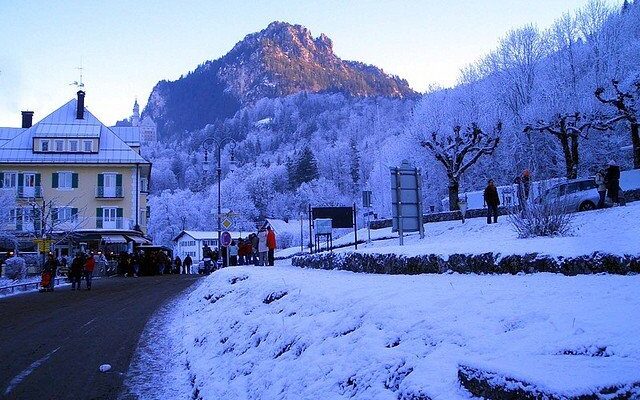Neuschwanstein Castle
Neuschwanstein Castle is built in the Bavarian Alps, on a cliff 92 meters high. It is one of the most famous castles of Ludwig II of Bavaria, sometimes referred to as Ludwig the Mad. Literally, Neuschwanstein translates as “New Swan Cliff”, and in general the castle is named after the Knight of the Swan from Wagner’s opera “Lohengrin”. The castle attracts around 1.3 million visitors each year, making Neuschwanstein one of the most famous royal buildings in the world.

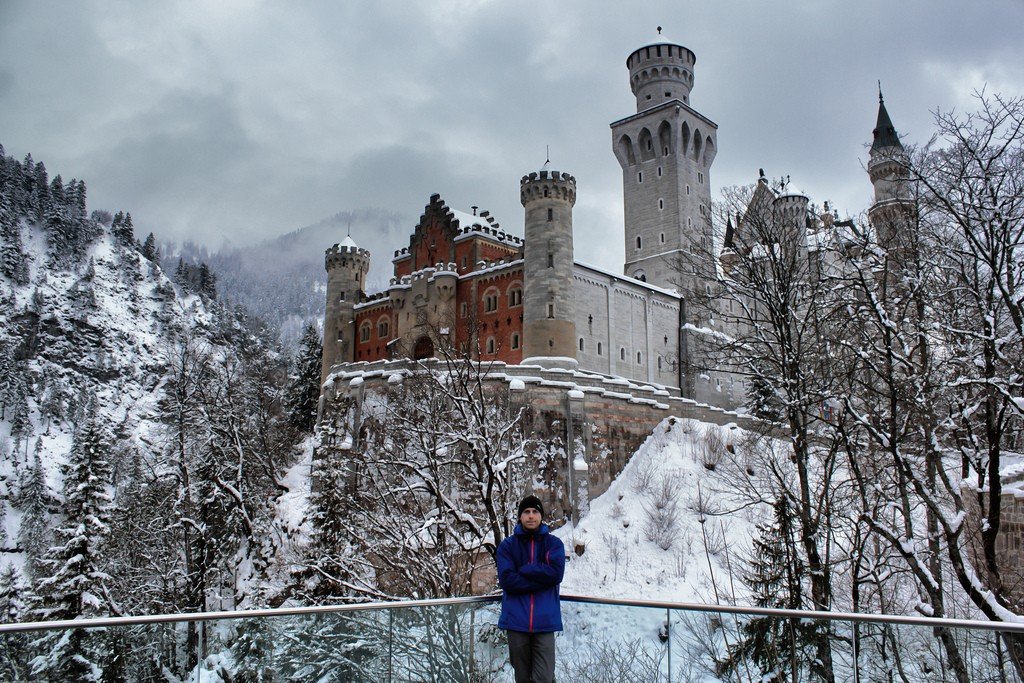
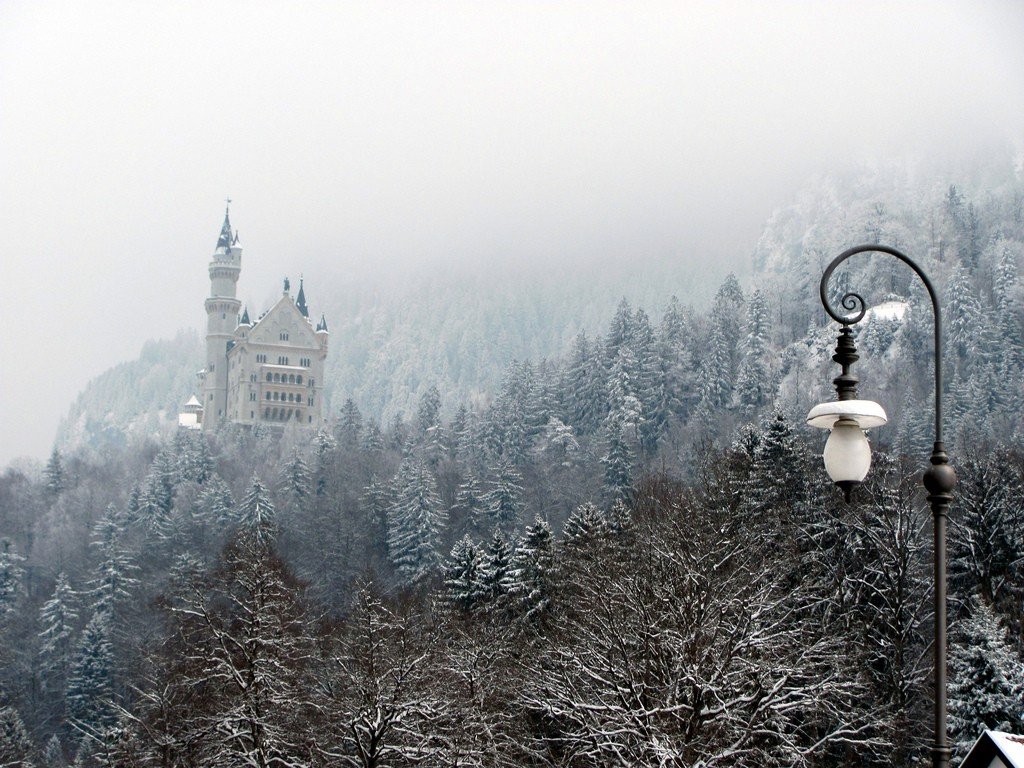
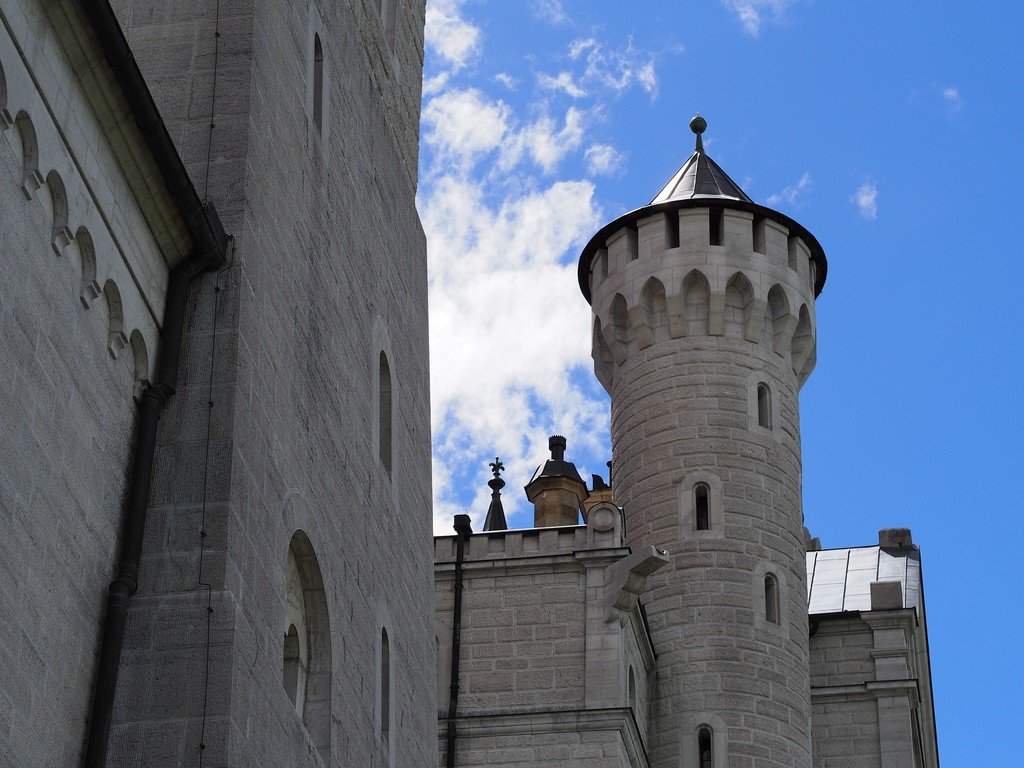
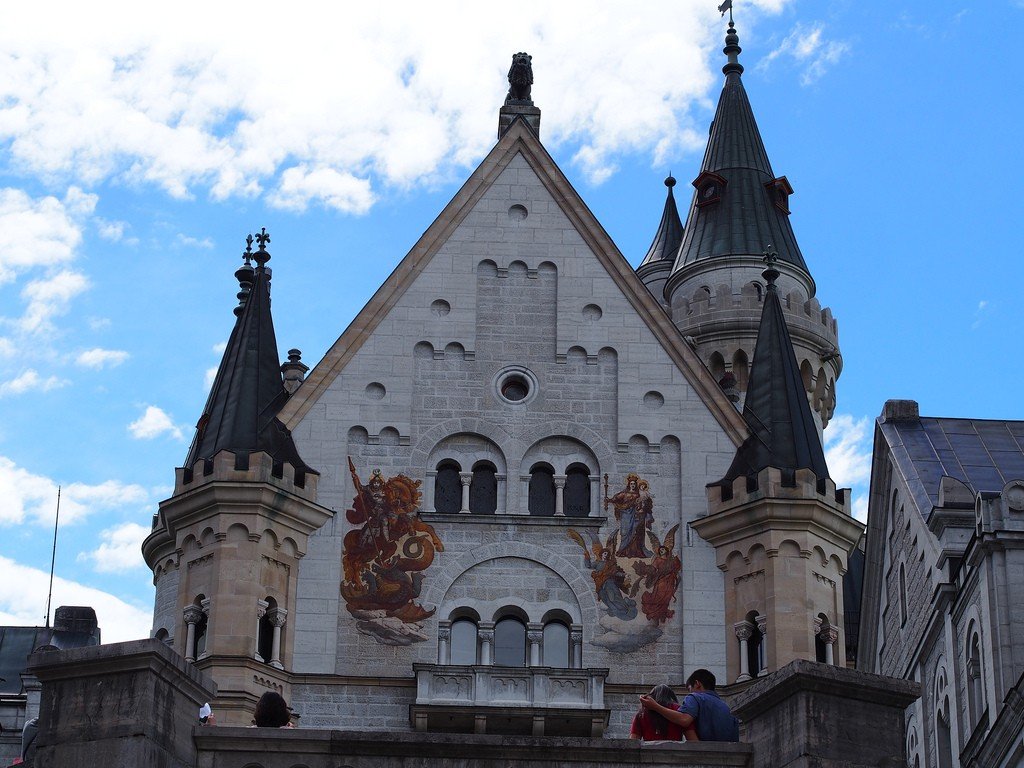
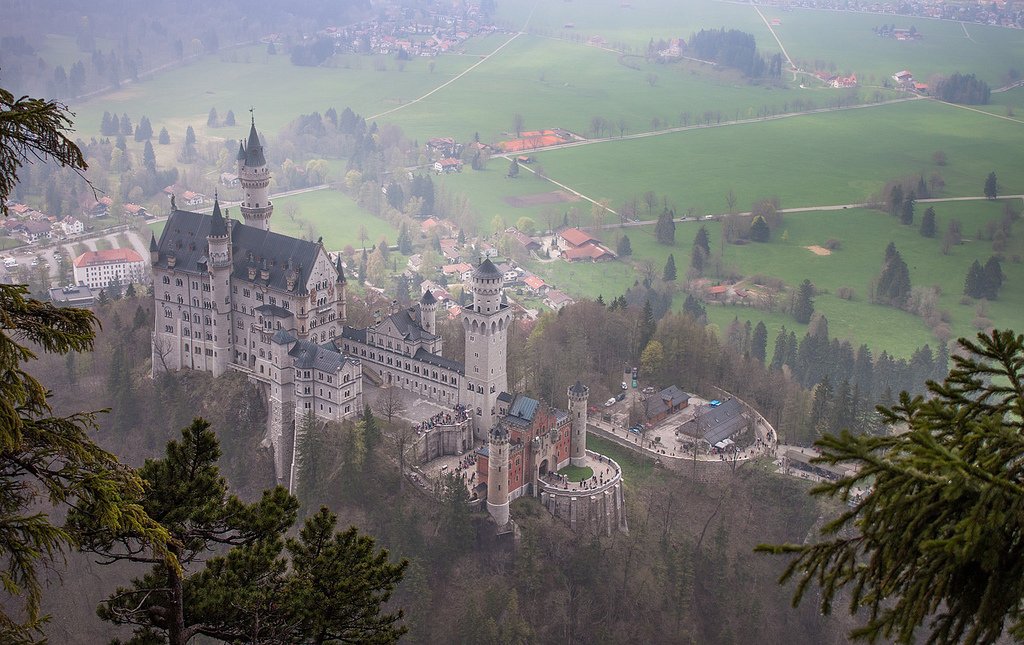
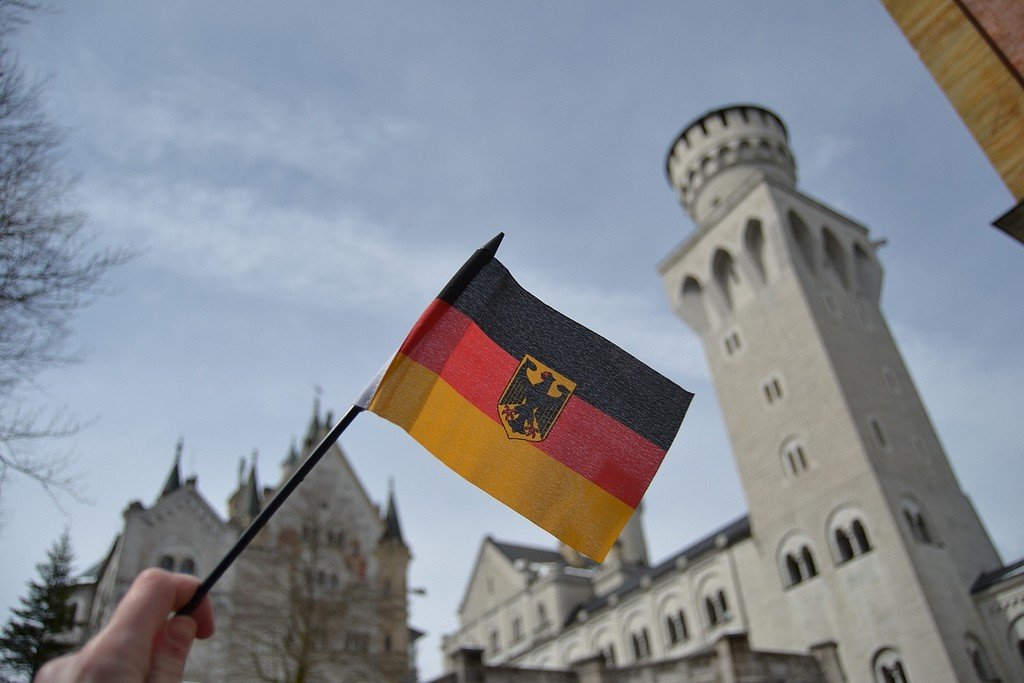
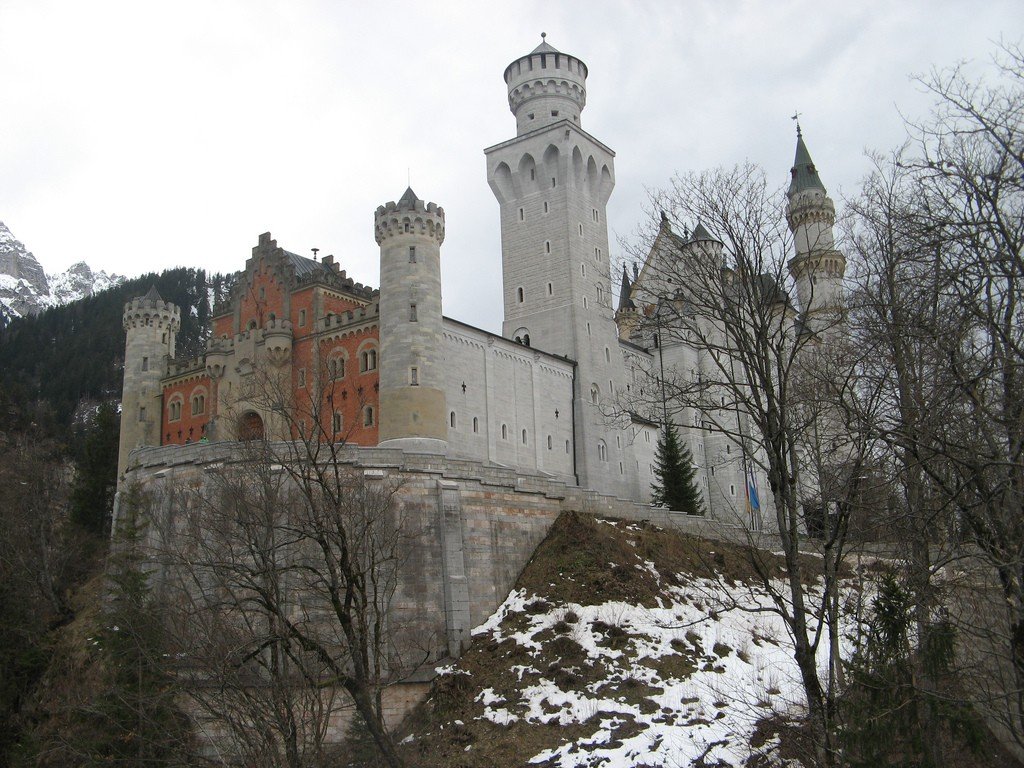
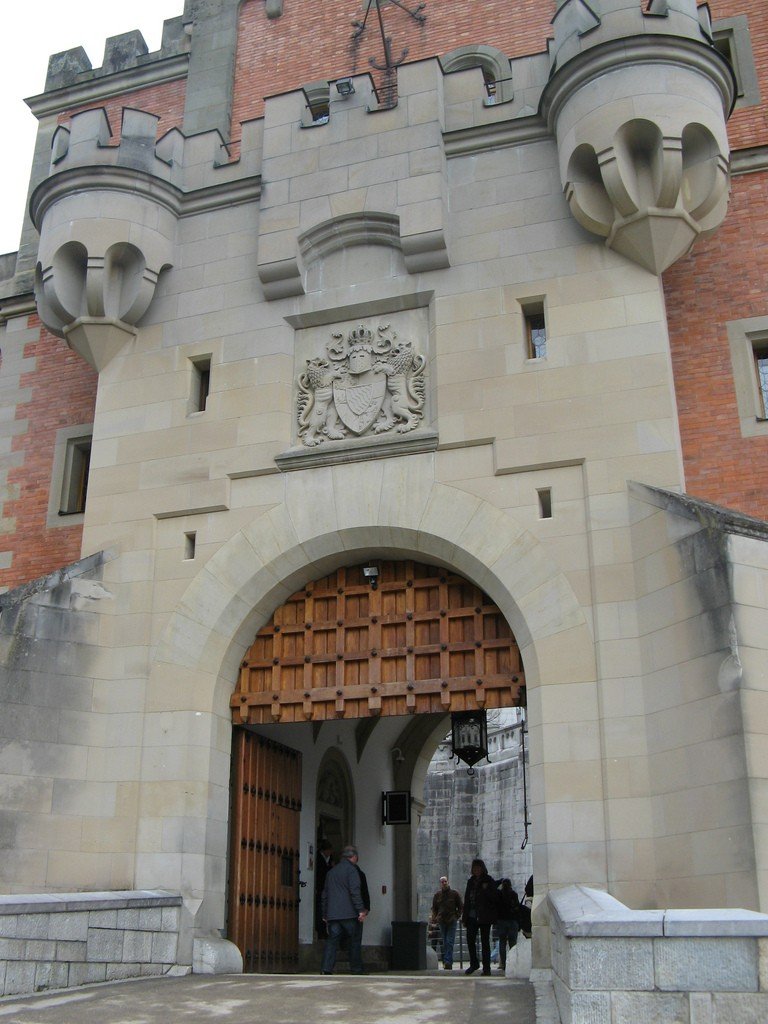
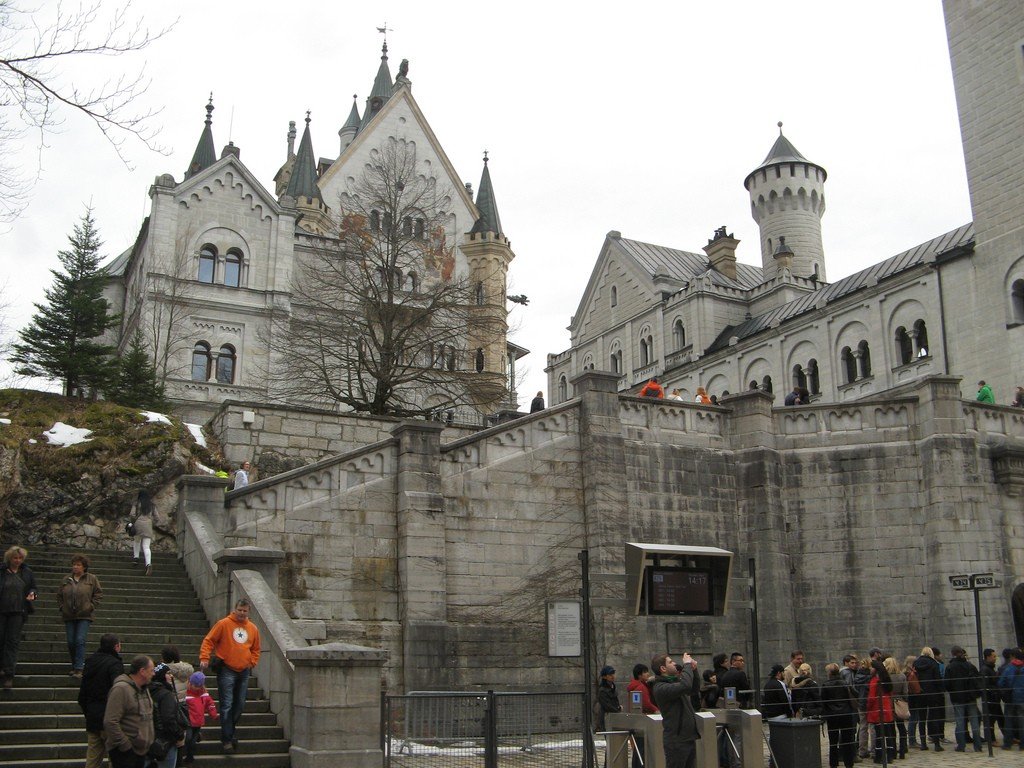
Video: Neuschwanstein Castle
ContentsHighlights
The slender, towering Neuschwanstein is located near the town of Füssen and Hohenschwangau Castle in southern Germany, near the Austrian border. The white stone structure with patterned windows is crowned by graceful island turrets with loopholes and arched balconies. Neuschwanstein Castle fits perfectly into the surrounding Alpine landscape. From afar, it looks like a theater set. The architectural concept belonged to Ludwig II. He began building it in September 1869. “The most beautiful place you can find,” the king wrote to Wagner. – Here I will build a castle in the style of the old German knightly fortresses.” Six months before his death, the king moved into the unfinished castle.
There is no belligerence in Neuschwanstein. It is a palace-fortress. Not for war, but for lofty dreams and beautiful music. On the walls and tapestries, in the design of furniture, in the interior of staircases and passages, on the ceilings prevail images of swans – drawn, stone, wooden, metal. Wall paintings in many rooms are based on Wagner’s operas “Tristan and Isolde”, “The Ring of the Nibelungs”, “Parsifal” and “Tannhäuser”. Twelve luxurious rooms of the royal chambers are open for viewing.
The castle was designed by Christian Junck. Neuschwanstein is located near Hohenschwangau, where Ludwig grew up. Its whimsical shape is so beautiful that it was the one that prompted Walt Disney to design the look of Cinderella’s castle, which later became the company’s logo.
.
Ludwig was removed from power before the castle was completed, and the palace was opened to the public after the king’s mysterious death in 1886.
.What to see
Neuschwanstein embodies the spirit of 19th century Romanticism. The castle sits high up and can only be reached by a winding road from the valley below. Here, many medieval details – narrow spiral staircases, many towers and turrets – are combined with advanced engineering: heated air, running water on all floors and toilets with automatic flushing.
In length, the plot on which Neuschwanstein Castle stands is 130 m, the total area of all premises is almost 60 thousand square meters. m. The main tower is 80 meters high, the square tower is 48 meters high, and the main building is 57 meters high. The construction cost 6 million 180 thousand marks in gold.
.After 17 years of construction, only 14 of the 360 rooms were finished before King Ludwig’s death, but even for their sake it is worth visiting the castle.
.
On the first floor of Neuschwanstein are the servants’ quarters and the palace kitchen. The royal staircase leads to the fourth floor of the palace, where the Throne Room and the royal chambers (bedroom, dining room, domestic chapel, study, drawing room) are opposite each other. Between them are the valet’s and adjutant’s rooms. In the design of the Throne Room elements of the Byzantine temple of St. Sophia can be seen. The hall resembles an Orthodox temple with a sky dome and the faces of the saints. Its ceiling is studded with golden stars on a green background. A huge chandelier made of gilded bronze in the form of a royal crown weighs more than 1.5 tons and is designed for 96 candles. Nine steps of the Carrara marble staircase lead to the platform where the royal throne was to stand. It was never made because the king passed away. Above the platform in a golden dome are Jesus Christ, the Virgin Mary and John the Baptist, surrounded by angels. Below them, between green palm trees, are images of six canonized European monarchs. Royalty comes from God – the main motif of the composition.
.The drawing room is the largest room in the royal chambers. Four columns distinguish the Swan Corner in it, where the king liked to read in solitude. Colorful panels depict scenes from the Lohengrin saga. A painting on the Holy Grail is filled with warm light.
.The throne room of Neuschwanstein Castle is decorated in an exquisite Byzantine style inspired by the Aya Sofia Cathedral in Istanbul. The architects envisioned a two-tiered throne room with columns made of imitation porphyry and lapis lazuli.
The walls of the study are finished in stained oak with skillful carving and fine chasing. Fourteen of Germany’s finest craftsmen spent more than four years doing the woodwork for the royal bedroom. There is a fine view of the Pellat Gorge and the waterfall. This is where Ludwig II’s deposition was announced on June 11, 1886.
.The royal chapel is in a graceful neo-Gothic style. In the center of the tricuspid altar is a depiction of Louis IX the Saint, canonized in 1297.
The oak panels of the royal dressing room contain paintings from the life of the German troubadours Walter von der Vogelweide and Hans Saxe.Neuschwanstein’s Singing Hall has the same massive trapezoidal dark wood ceiling as the Wartburg Castle’s Celebration Hall. But instead of frozen images of German kings, colorful paintings based on the legend of Parsifal and the tale of Tannhäuser are embedded in the golden ornamented wooden panels between the windows. The singing hall is the largest in the castle.
The royal dining room of Neuschwanstein Castle is small. Ludwig preferred to dine alone. The order was written on a table, it was lowered by a manual elevator three floors below to the kitchen and came back up with the food set accordingly.
>
Higher up in the mountains, a suspension bridge crosses the gorge. Under it is a 45-meter waterfall. From here you can get the best view of the mountains surrounding the castle.
Tourist Information
Today, Neuschwanstein Castle is open as a museum. An adult ticket costs 12 euros and a concession ticket costs 11 euros. Tourists are taken to Neuschwanstein by horse-drawn carriages on a serpentine road, but it is also possible to climb on foot.
Neuschwanstein is open to the public April through September 9.00-18.00, read 9.00-20.00, October through March 10.00-16.00. On Christmas and New Year’s Eve the entrance is closed.
. Visits are only possible with tour groups. You can take a player-audio guide in Russian..